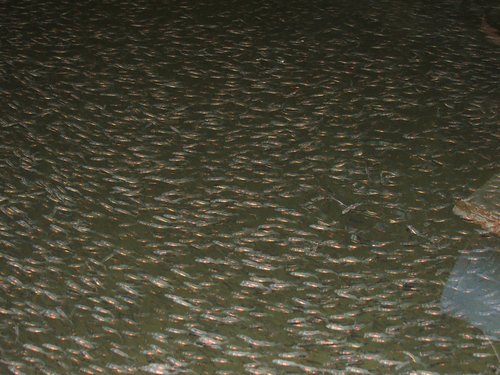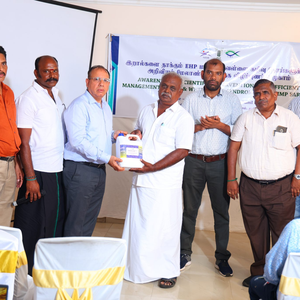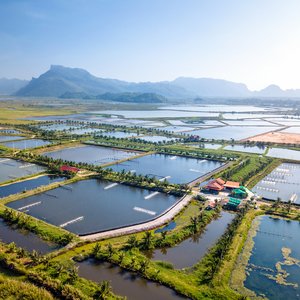The 8th Fish & Shellfish Larviculture Symposium, Larvi 2024, was held in September in Ostend, Belgium, and attracted over 350 participants from more than 50 countries. Hatchery Feed & Management spoke with Tony Broadhurst, a consultant hatchery specialist with Cuna del Mar Group with years of experience in the field, offering valuable perspectives on how the hatchery industry has evolved in recent years and what the future holds.
HFM: What do you see as the main advances for hatcheries since the first Larvi edition?
TB: Commercially available diets for fish larvae and broodstock have advanced significantly, driven by our growing understanding of their nutritional requirements and digestive systems. We’ve also gained deeper insights into microbial effects—both harmful and beneficial—and have leveraged this knowledge to benefit fish health and performance. Additionally, we now have more effective tools for sustainably managing the microbial environment. With these advancements, many of the technical foundations needed to establish stable business models in this growing industry are now in place.
HFM: What have been the main advances and challenges in live feeds, micro-diets and weaning nutrition in recent years?
TB: Despite advancements, it is likely that we still haven’t perfected feeding strategies at this stage, as the first-feeding phase remains the point at which most larvae are lost.
Micro-diets for larval fish have been under development since well before the Larvi Conference of 1991, but it feels like only now we are beginning to see commercial products that can effectively supplement standard live prey items such as rotifers and Artemia. Fully replacing live feeds remains challenging, as most marine fish larvae still appear to rely on their live prey to aid in digestion during their earliest stages.
Where we have seen significant progress is with weaning diets. Today, there are several commercial products available that are far superior to anything offered in the 1990s. Advances in particle size range, composition, water stability, and digestibility have addressed many of the earlier challenges, making the weaning process far less traumatic than it used to be.
Nearly all commercially cultivated marine fish species are carnivorous, at least during their larval stages, necessitating the use of live prey in their earliest life phases. This requirement introduces significant complexity to hatchery operations and substantially increases per-unit production costs. However, live feed production technology has made remarkable strides in recent years. Rotifer production, while still time-consuming, is no longer the gamble it once was, and many commercial enrichment media appear to have reached near-optimal performance.
Despite these advances, the most exciting development for me lies in the realm of live prey alternatives. Hatcheries focusing on “new” aquaculture species, such as groupers, snappers, and labroids, have been compelled to develop techniques for cultivating live copepod larvae, which are even smaller than rotifers and serve as essential first prey. While effective, these methods increase complexity and costs, hindering broader industrial adoption.
However, a few commercially available alternatives have entered the market, which could prove to be game-changers. These innovations may allow fish larvae to be reared on a variety of live prey starting at first feeding, without the need for hatcheries to cultivate live cultures themselves. This would streamline live prey preparation, potentially reducing it to processes similar to hatching Artemia cysts or even simpler. Combined with potential benefits like improved nutrition, enhanced digestibility, and positive microbial effects, these alternatives—if cost-effective—could significantly improve juvenile output in hatcheries.

HFM: Are there still nutrition gaps that need to be addressed for different species?
TB: Absolutely, I believe there are. For instance, I’m currently engaged in discussions with colleagues about the taurine requirements of different species, but I suspect there are numerous other nutrient needs yet to be fully understood. Nutrient accessibility is another critical issue. During Larvi Conference, we were once again reminded that long-chain EFAs (essential fatty acids) are more effectively delivered in phospholipid form. I wouldn’t be surprised if similar accessibility issues exist for other key nutrients as well.
Additionally, I’m concerned about the potential impact of feed processing—particularly heat treatments—on the bioavailability of nutrients that are essential for reproduction or early larval survival. These factors warrant further investigation to ensure that we are meeting the precise nutritional needs of the species we cultivate.
HFM: Is management still an issue? Have hatchery protocols (microbial management, vaccination, etc.) improved in the recent years?
TB: Yes, management remains a significant challenge. Marine fish larvae are born with limited intrinsic microbial defenses, making it critical to control the microbial environment in intensive hatcheries to give them a fair chance of survival. Most hatcheries still rely on the holistic "green water" technique, a method dating back to the 1960s. However, we've learned from the shrimp industry and have begun incorporating more advanced probiotics to stabilize the microbial environment during these vulnerable early stages.
For later life stages, a variety of vaccines are available to confer immunity against many microbial threats. However, these don't provide much help during the larval stages, where the risk remains high.
Managing the microbial environment during the first few weeks post-hatching is still a critical area, and while progress has been made, there’s considerable room for further improvement.
HFM: What are the main genetic advances, and what opportunities lie ahead in the coming years?
TB: While I’m not a molecular biologist, I believe most biologists would agree that the development of molecular tools to analyze the structure of nucleic acids has revolutionized our field. Coupled with advances in measuring gene expression, we now have the ability to trace the inheritance of specific traits and pinpoint their genetic origins with remarkable precision.
In the industry, this means we can identify broodstock specimens with desirable genotypes and promote them, all while minimizing the risks of inbreeding or the co-selection of undesirable traits. This represents a monumental leap forward—one I didn’t expect to see become routinely accessible and affordable in aquaculture within my career.
I hope more industry stakeholders will adopt this technology soon. It provides us with a unique opportunity to avoid the same mistakes made at the dawn of terrestrial livestock farming.
HFM: How do you see the different markets and species where you operate?
TB: I used to work in Europe, where I believe the marine fish sector is finally beginning to reach maturity, though it continues to grow and diversify into other species. That said, the industry's recent history highlights some risks associated with rapid expansion. Product values have dropped, and many companies have struggled or failed along the way. Even for those that remain, achieving attractive profit margins over production costs has been a challenge, which has slowed growth in the region.
However, it’s not all gloom and doom. At the Larvi conference, I’ve observed a more optimistic outlook among several industrial contacts in Europe, and I’m confident this signals a brighter future for the sector.
Currently, my primary focus is in Latin America, where the industry is at a much earlier stage of development. The species being cultivated differ, and the markets are still undersupplied, keeping prices high. This presents an excellent opportunity to leverage the technical progress achieved in Europe and Asia—along with local innovations—to expand the industry more efficiently. However, we must be careful to avoid overproduction, which could flood the market and drive prices below production costs.
HFM: What are the main challenges and opportunities for fish and shrimp hatchery production in the coming years?
TB: The list of challenges and opportunities is extensive, but I’ll focus on what I believe should be the top priority: ensuring that the industry continues to develop in ways that are ethical, sustainable, and profitable. There’s no value in producing fish or shrimp if consumers are hesitant or unwilling to purchase them due to concerns about sustainability or production practices. Balancing these three pillars will be crucial for the industry's long-term success and public acceptance.
More insights from Larvi 2024:
Larvi 2024: Driving innovation and overcoming challenges in global larviculture
Insights from a pioneer: Rotifer culture past, present and future










